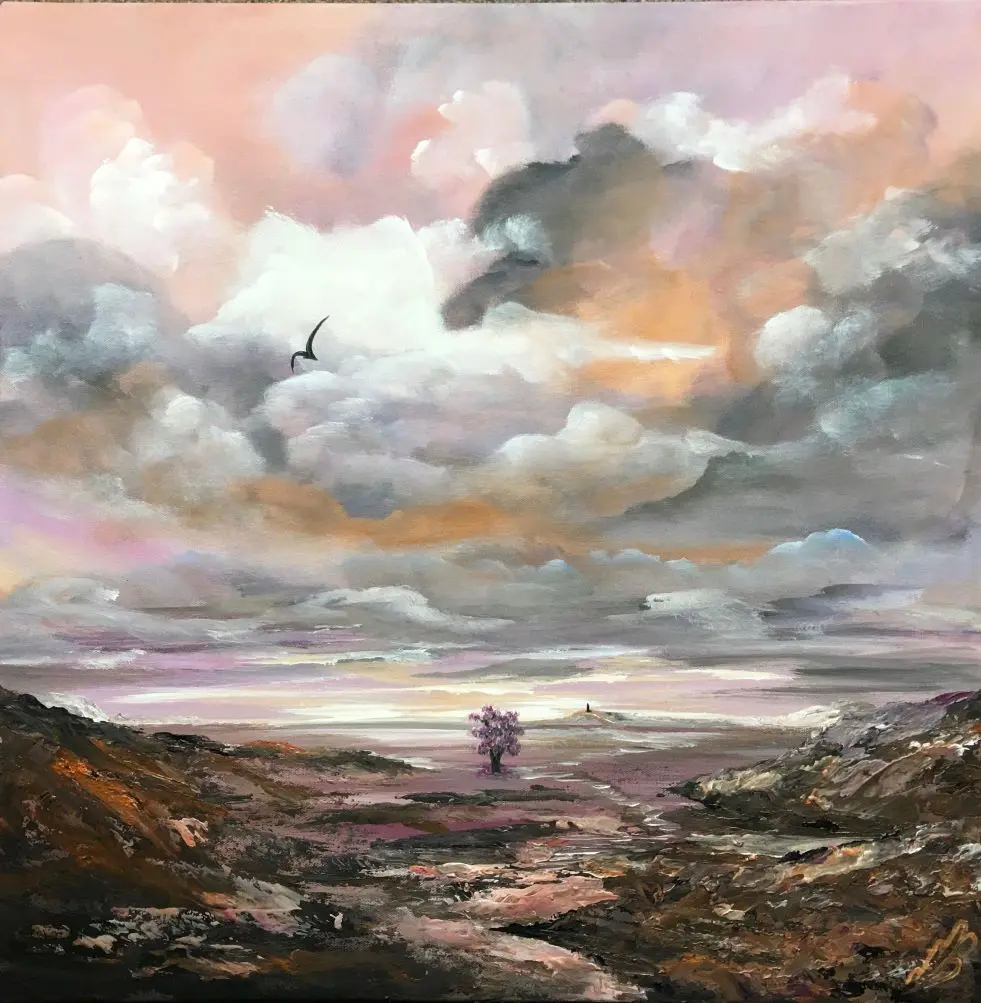I took a big step in my artistic journey today. I spent four hours working on a painting everyone said was finished except I hadn’t signed it. Though much admired, I believed I could do better.
The composition — a bouquet of rounded peonies set within a square frame — was undeniably pleasing. But the real test was far from the casual observer’s eye.
The Nuances of Edges
My focus wasn’t on the canvas edges, but rather on the subtle transitions between colors within the painting. These intersections are crucial, raising several questions:
- How does one color transition to another?
- Should the edge be hard or soft?
- Does it blend or create a stark contrast?
- Does it incorporate hues from adjacent colors?
The Contrast Between Warm and Cool
The juxtaposition of warm and cool colors is essential for depth and dimension. Warm colors tend to come forward; cool colors recede. It’s a principle that informs decisions regarding the placement of petals and the sources of light. In painting shadows, I think about temperature contrast; a warm petal casts a cool shadow.
The All Over Approach
To achieve harmony, I utilize an all-over painting process. The canvas has interdependent sections that need to be solved holistically. This process poses a new challenge: knowing when to quit. The challenge comes in recreating exactly the state of the painting after each session, so finding the right moment to stop is key.
The Physical and Mental Demands
Painting for extended periods takes its toll. Fatigue sets in, affecting precision and leading to small errors that require correction. When these corrections begin to outweigh progress, it’s a clear sign to conclude the day’s work. This tipping point is as much about preserving the integrity of the piece as it is about maintaining physical well-being.
Post-Painting Rituals
After each session, I follow a specific routine:
- Photograph the day’s progress
- Clean brushes and scrape the palette
- Spend time studying the work
- Plan the next day’s approach
- Document the session in a painting diary
This diary serves as a valuable record, including:
- Date and duration of the session
- Areas of focus
- Colors and mediums used
A Procedural Approach to Artistic Freedom
The way I work is quite structured, there are many stages and procedures that I stick to. But that doesn’t restrict the result. It provides a structure in which creativity can operate. I am just the pipe in the pipeline of the painting itself that determines its end result.
This balance between structure and artistic freedom lies at the heart of my practice. The bindery enables technical focus and artistic development, producing books that are as beautifully executed as they are individualized. The process with each painting is a conversation, between the art and the nature of materials and subject.
In working to improve this painting of a peony, I am reminded of the relationship between technical competence and artistic insight. With every brushstroke, a decision; with every color choice, a statement. It’s as much listening to the painting as it is imposing my will on it. Something beautiful had sprung from this movement of artists and artwork, an unequivocal challenge to the subject and journey of its creation.



Pingback: Where Should You Post Your Artwork? A Guide to the Best Platforms and Strategies – Real Life: An Installation